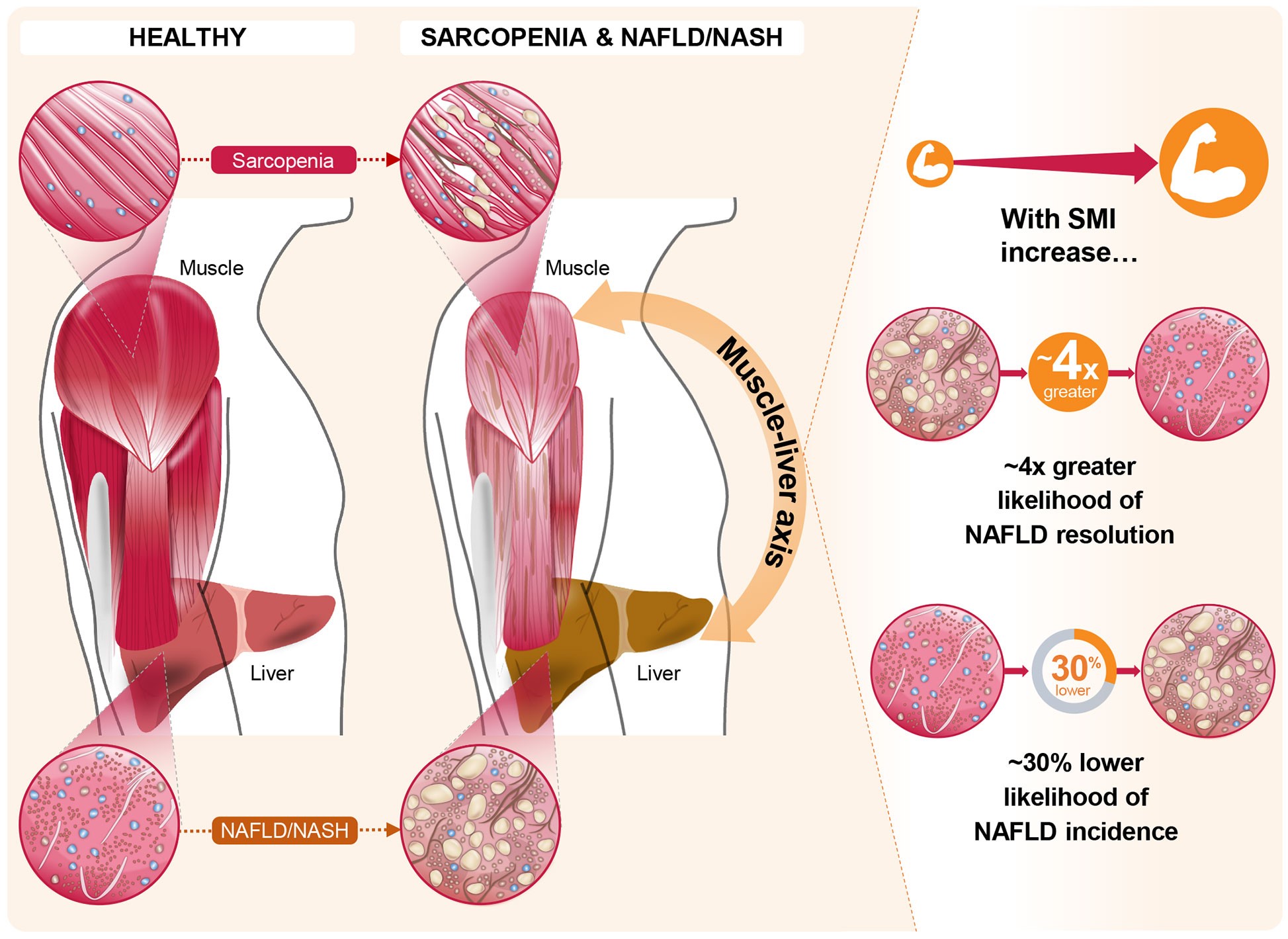The relationship between liver disease and sarcopenia
Today, we would like to introduce the interaction between the liver and the muscular system.
The liver has been known to work closely with other organs and in fact, in previous emails, we have mentioned some of the interactions between the liver and gut. However, today we would like focus on how the liver works with skeletal muscles.
It has long been recognized that a loss of muscle mass, including sarcopenia, is involved in the development of NASH and NAFLD, as well as in the worsening of their pathologies.
Normally, the liver of a healthy individual will store energy derived from his/her diet for later use, but in patients who are suffering from impaired liver function due to NASH or cirrhosis, the amount of energy that is stored is reduced.
To compensate for this lack of energy, the skeletal muscles need to provide a source of energy, such as a protein source called branched-chain amino acids (BCAAs), however what occurs instead is a loss in skeletal muscle mass (Moriwaki et al., Biochem Biophys Res Commun. 2004).
Furthermore, it has been shown that loss of muscle mass is closely associated with the risk of worsening NAFLD pathology (Shida et al., J Gastroenterol. 2018).
In addition to this, decreased muscle mass and strength, muscle atrophy, and increased visceral fat have been reported as risk factors in non-obese patients with NAFLD (Shida et al., Hepatol Res. 2020).
Therefore it is no surprise that the development of therapeutic treatments that compensate for muscle mass, muscle quality, and function are currently gaining a lot of attention as a possible treatment or prevention option for NAFLD/NASH.

Fig. Overview of liver and muscle in NAFLD/NASH
Myosteatosis, a condition in which an individual has low muscle mass and high muscle fat, is very common in patients with NAFLD and has been thought to be closely associated with an increased risk of NAFLD/NASH (Chakravarthy et al., Front Endocrinol (Lausanne). 2020).
Here at SMC, we offer clients pre-clinical services in the areas of inflammation and fibrosis, by providing quality animal models that have high clinical relevance.
Our proprietary STAM™ model is the world’s first non-alcoholic steatohepatitis to liver cancer model. It has a background of late stage type 2 diabetes and develops a disease state with a high clinical correlation similar to human NASH.
In the past, it was observed that in STAM™ mice, as the gut microbiota changes and dysbiosis occurs, NAFLD and NASH progresses, demonstrating a liver-gut correlation (Guoxiang et al., Oncotarget., 2016).
It has been suggested that muscles may likewise correlate with disease progression in STAM™ mice as well.
